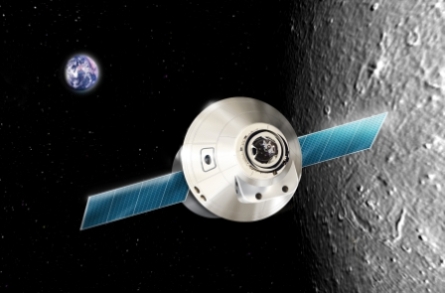Guidance and control strategies for "anytime return" from the Moon's surface are the focus of work starting this year by the European Space Agency for its Crew Space Transportation System (CSTS).
The proposed joint ESA-Russian CSTS vehicle would participate in manned lunar missions. The agency wants to use guidance and control strategies for a skip-entry to return a capsule to a single landing site. This is preferred for its lower recovery costs, expected post-landing safety and support for spacecraft reusability.
|
|---|
Above: A possible Crew Space Transportation System concept by Russia's Energia company shown in Lunar orbit |
"The Russians perfected [the skip re-entry] technique in the 1960s for their abortive manned lunar programme," says ESA.
The work will initially examine the mission, system requirements and constraints of Apollo and future Orion crew exploration vehicle and CSTS lunar missions. The work will then focus on algorithms to realise that control and guidance. ESA wants algorithms general enough to be "applicable to similar CSTS concepts with different vehicle characteristics".
The algorithms will be demonstrated in a tailored re-entry real-time "test bench", which is a dedicated high-fidelity simulation. The project must deliver "software embedded" skip-entry algorithms at a technology readiness level of three. A level of three means it is at a proof-of-concept stage of development. The simulations will be used to size the CSTS's heat shield and engines.
Source: Flight International




















